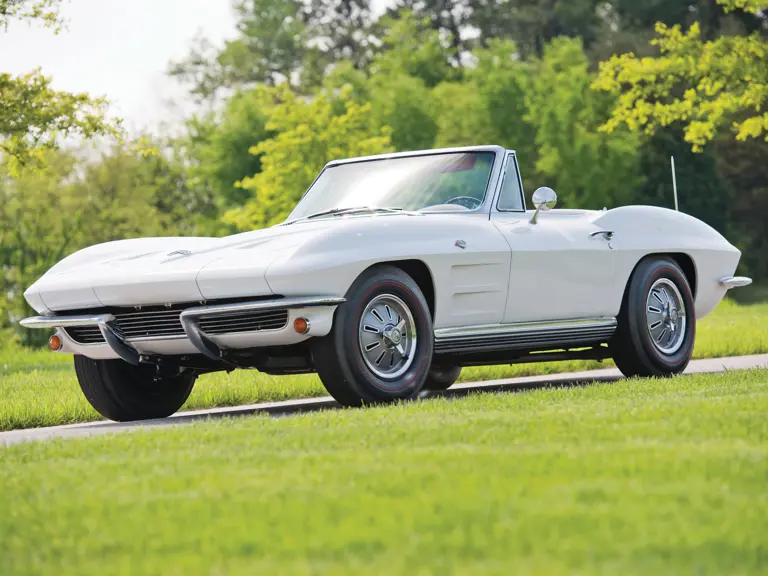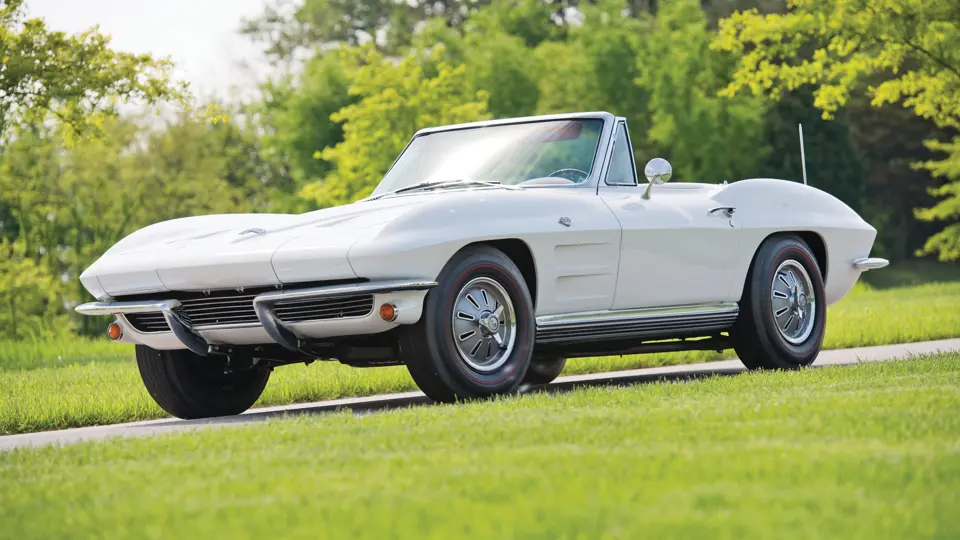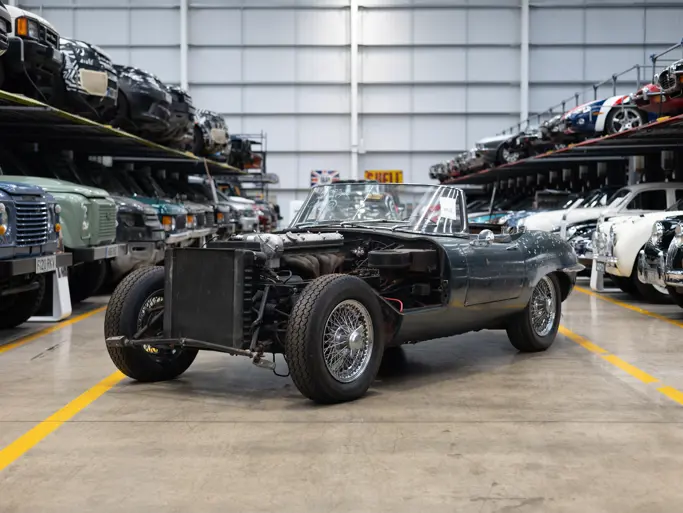The second-generation Corvette for 1963 revealed a dramatic change in direction for America’s sports car. Named “Sting Ray” from its shape, it was the work of GM styling Vice-President Bill Mitchell. Taking the uplifted “duck tail” of the 1962 Corvette, he sketched a lovely fastback coupe, Corvette’s first, accented by a now-near-legendary split rear window. Hidden headlamps were located in the leading edge of the nose. The convertible retained a more conventional profile, but incorporated all the other Sting Ray features and details.
Aside from the engine, it was a clean-sheet-of-paper design, featuring independent rear suspension, the brainchild of engineer Zora Arkus-Duntov. A chassis-mounted differential drove half-shafts, their hubs suspended with a transverse leaf spring. Front suspension continued the unequal length control arms of earlier Corvettes, keeping the recirculating ball steering gear. The 1964 version remained much alike in styling. The most obvious visible cues for identifying the 1964 included removal of the center spine through the rear window (coupes only), removal of the hood trim panels and different wheel cover design.
Mostly original, but for a repaint in its original (according to the Code 936 in data tag photos) Ermine White, this 1964 Corvette has a black convertible top, all in excellent condition. The interior is red vinyl, and it too, appears to be in very nice condition. This particular Corvette is reported to run with the 327-cid, 250-hp V-8 engine and is paired to a four-speed manual transmission. The engine compartment is properly detailed and the undercarriage is in excellent, tidy overall condition.
Equipped with windshield washers, factory spinner-style wheel covers, redline tires and a clock; this 1964 Corvette has a modern JVC AM/FM/cassette stereo subtly installed in the original dashboard location. An original Owner’s Guide is also included with the car. In 1964, 22,229 total Corvettes were produced, of these, 13,925 were the popular and desirable soft-top style. Since its introduction in 1953, the Corvette has steadily grown into a true “American institution,” they have presence, power and style that is as timeless as the model itself.



 | Auburn, Indiana
| Auburn, Indiana


